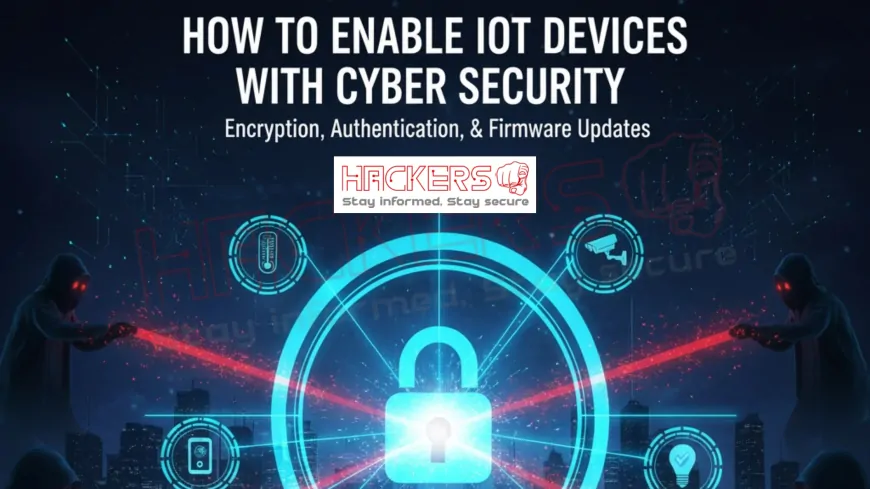Why Are IoT Devices the Weakest Link in Modern Networks?
Your smart coffee maker knows your morning routine. Your office thermostat adjusts itself when no one is around. Your warehouse sensors track every package in real time. These tiny connected devices make life and business smoother. But here’s the hard truth: they are also the **weakest link** in your entire network. Hackers don’t always go after your firewall or your laptop. They go for the light bulb, the camera, the printer. Why? Because IoT devices are built for convenience, not security. And once they’re inside, the whole network is at risk. This blog explains, in plain language, why IoT is so vulnerable and what it means for homes, businesses, and even cities. Let’s dig in.

Table of Contents
- What Exactly Are IoT Devices?
- The Explosive Growth of IoT
- Default Settings: An Open Invitation
- No Updates, No Protection
- Weak Hardware Can’t Handle Strong Security
- Long Lifecycle, Short Security Lifespan
- No Universal Security Standard
- IoT Bypasses Traditional Firewalls
- Cloud Dependency Creates New Risks
- Perfect Targets for Botnets
- Massive Privacy Leak Potential
- Real Attacks That Prove the Danger
- IoT Weakness Comparison Table
- Conclusion
What Exactly Are IoT Devices?
IoT stands for Internet of Things. It means any physical object with a sensor, software, and internet connection. These include smart TVs, doorbells, thermostats, fitness trackers, industrial machines, and even fish tank thermometers. They collect data, talk to apps, and act automatically. But unlike your phone or laptop, most IoT devices are not built with security in mind.
The Explosive Growth of IoT
By 2025, over 75 billion IoT devices will be online. That’s more than nine for every person on Earth. Homes have smart lights and plugs. Offices use badge readers and printers. Factories run on connected sensors. Cities manage traffic and waste with IoT. This growth is fast, but security is lagging far behind.
- New devices launch weekly
- Many cost under $20
- Most never get a security review
Default Settings: An Open Invitation
Most IoT devices ship with usernames like “admin” and passwords like “1234” or “password”. Users rarely change them. Hackers use tools like Shodan to scan the internet for these defaults. In minutes, they can take control. One study found millions of devices still using factory settings years after purchase.
- Default lists are public
- Setup wizards skip password changes
- Many devices don’t force a change
No Updates, No Protection
Phones and computers get monthly patches. Most IoT devices don’t. Some never get a single update. Others stop after one year. Known bugs stay open forever. Hackers find these flaws and exploit them. A camera from 2018 might still run 2016 software with zero fixes.
- Cheap chips can’t store large updates
- Manufacturers go out of business
- Users ignore update alerts
Weak Hardware Can’t Handle Strong Security
IoT devices use tiny, low-power chips to save cost and battery. These chips can’t run full antivirus or heavy encryption. Strong security needs memory and processing power. A $10 smart plug can’t do what a $1000 laptop does. So corners are cut. Encryption is weak or missing. Authentication is basic.
- 8-bit processors common in cheap devices
- Limited RAM and storage
- No room for secure boot or logging
Long Lifecycle, Short Security Lifespan
A light bulb lasts 10 years. A thermostat lasts 15. But the software inside? Often supported for only 2 to 3 years. After that, it’s a sitting duck. You can’t replace a wall-mounted device every year. So old, vulnerable software stays in use for a decade.
- Physical durability outlives digital safety
- No upgrade path for firmware
- End-of-life devices become liabilities
No Universal Security Standard
Phones follow strict rules. Cars have safety standards. IoT? Almost none. Any company can build and sell a connected device. No minimum password length. No required encryption. No update policy. Governments are starting to act, but most of the world has no rules.
- EU and UK now ban default passwords
- US has voluntary guidelines only
- Cheap imports ignore all standards
IoT Bypasses Traditional Firewalls
Your firewall protects PCs and servers. But many IoT devices connect directly to the cloud. They open outbound connections that firewalls allow. Hackers send commands through these open channels. Once inside, the device becomes a bridge to your internal network.
- Cloud apps need constant access
- Devices phone home every few minutes
- Firewall rules rarely block IoT traffic
Cloud Dependency Creates New Risks
Most IoT data goes to the cloud. If the cloud account is hacked, the device doesn’t matter. Weak app passwords, reused credentials, or phishing give full access. A single breach at a vendor can expose millions of devices.
- One password for all your cameras
- Cloud outages take devices offline
- Vendor hacks affect all users
Perfect Targets for Botnets
Botnets are armies of hacked devices used to attack websites or send spam. IoT devices are ideal: always on, high bandwidth, and poorly secured. The 2016 Mirai attack used cameras and routers to knock major sites offline. Your smart TV could be part of the next one.
- Devices run 24/7
- High-speed internet connections
- Hard to detect infection
Massive Privacy Leak Potential
IoT devices see and hear everything. Cameras watch your home. Microphones listen in smart speakers. Wearables track your heartbeat and location. A breach leaks your most personal moments. This data is sold, used for blackmail, or doxxing.
- Live feeds appear on dark web sites
- Voice recordings stored forever
- Location history reveals routines
Real Attacks That Prove the Danger
The Mirai botnet in 2016 was just the start. In 2018, a casino lost data through a smart fish tank thermometer. In 2021, a water plant in Florida was nearly poisoned via an IoT interface. Baby monitors are routinely hacked to scare parents. Smart fridges have sent spam. These are not rare events. They happen every day.
- Families harassed through doorbells
- Hospitals disrupted by infected devices
- Traffic lights hijacked in tests
IoT Weakness Comparison Table
| Weakness | Why It’s a Problem | Compared to PCs | Risk Level |
|---|---|---|---|
| Default Credentials | Easy guess or lookup | PCs require setup | Critical |
| No Updates | Known bugs stay open | Monthly patches | High |
| Weak Hardware | Can’t run strong security | Full antivirus possible | High |
| Long Lifecycle | Outlives support | Replaced every 3-5 years | Medium |
| No Standards | Anyone can sell insecure devices | OS enforces rules | High |
| Cloud Bypass | Skips local defenses | Local firewall control | Critical |
| Botnet Target | Always on, hard to detect | Users notice slowdown | High |
| Privacy Exposure | Sees inside homes | Limited sensors | Critical |
Conclusion
IoT devices are the weakest link in modern networks because they were never designed to be strong. Default passwords, no updates, weak hardware, and no standards create a perfect storm for hackers. They don’t need to break in. The door is already open. From botnets to privacy leaks, the risks are real and growing. But awareness is the first step. Change defaults. Demand updates. Isolate devices. Choose secure brands. The future is connected, but it doesn’t have to be compromised. Secure your IoT today, or pay the price tomorrow.
What does IoT stand for?
Internet of Things. It means everyday objects connected to the internet.
Why are IoT devices so insecure?
They prioritize cost and convenience over security. Weak hardware and no updates are common.
Can a light bulb really be hacked?
Yes. If it’s smart and online, it can be controlled or used in attacks.
Do all IoT devices have default passwords?
Most do. Always change them during setup.
Why don’t IoT devices get updates?
Cheap chips, low profit, or the company stops support.
Can my smart TV spy on me?
Yes, if hacked. It has a camera, mic, and internet access.
Is my fitness tracker a security risk?
Yes. It holds health and location data that hackers want.
Can IoT devices infect my computer?
Yes. They can spread malware across the same network.
Should I put IoT on a separate network?
Yes. Isolate them to limit damage if hacked.
Are budget IoT devices safe?
Rarely. They often lack encryption and updates.
Can a hacked IoT device crash the internet?
Yes. Botnets like Mirai have done it before.
Do smart speakers record everything?
They record after a wake word, but hacks can turn them on silently.
Why do hackers target fish tanks?
Any connected device is a door. A casino lost data via a smart thermometer.
Can I use IoT without internet?
Some work locally, but most need cloud access to function.
Are new IoT devices safer?
Some are. Look for update support and no default passwords.
Should I cover my camera?
Yes. A physical cover is the only sure way to block viewing.
Can children’s toys be hacked?
Yes. Connected dolls have leaked voice messages and locations.
Is IoT security improving?
Slowly. New laws in the EU and UK are forcing change.
Can antivirus protect IoT?
No. Most devices can’t run antivirus software.
Why is IoT called the weakest link?
It has the most devices, weakest security, and direct network access.
What's Your Reaction?






























































